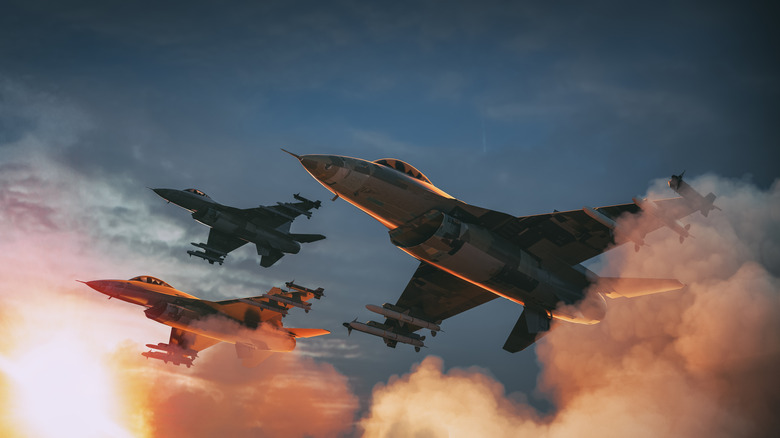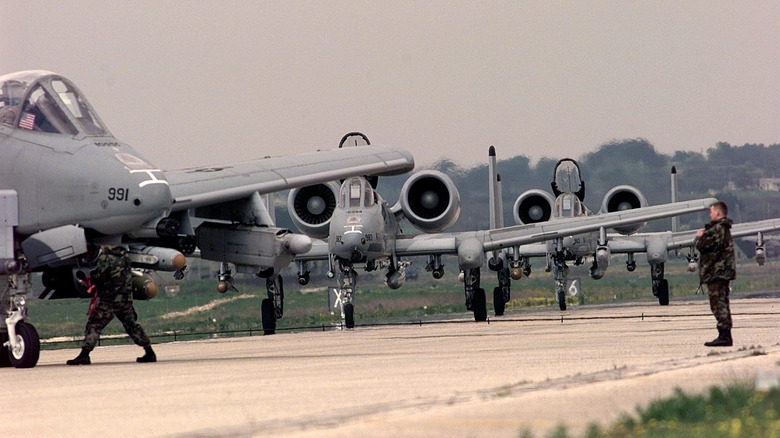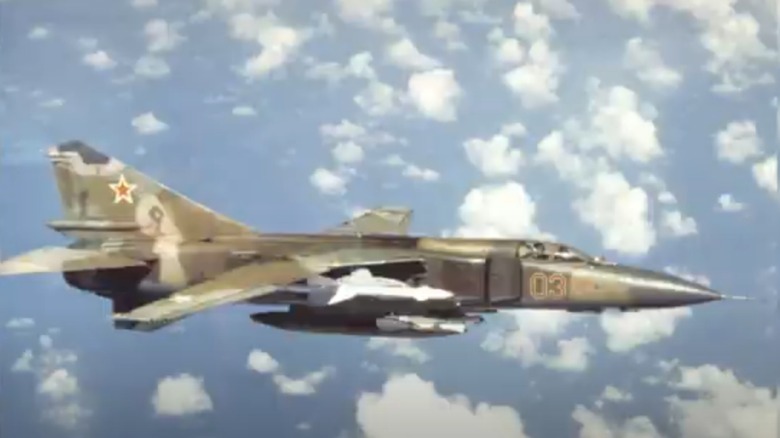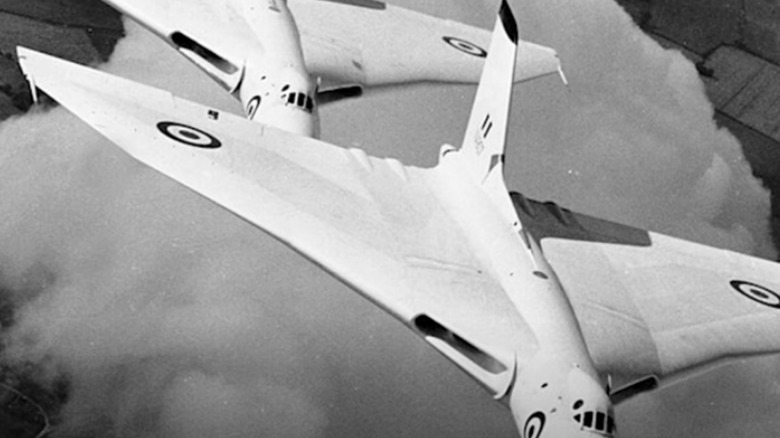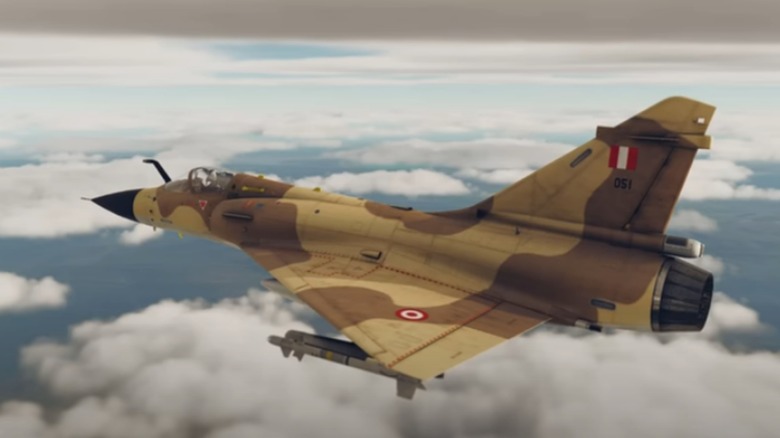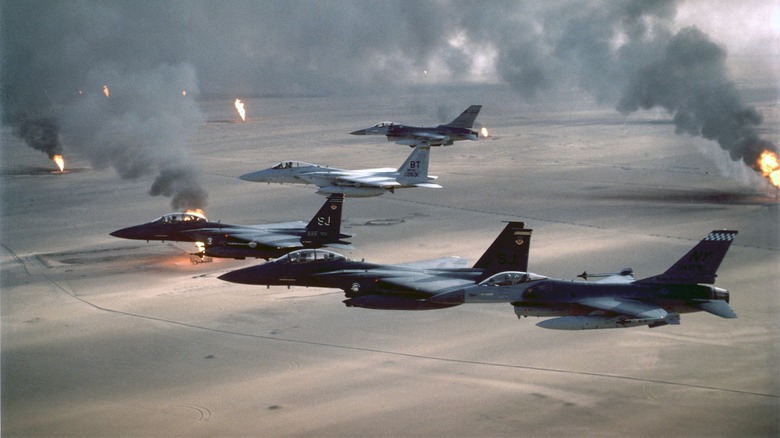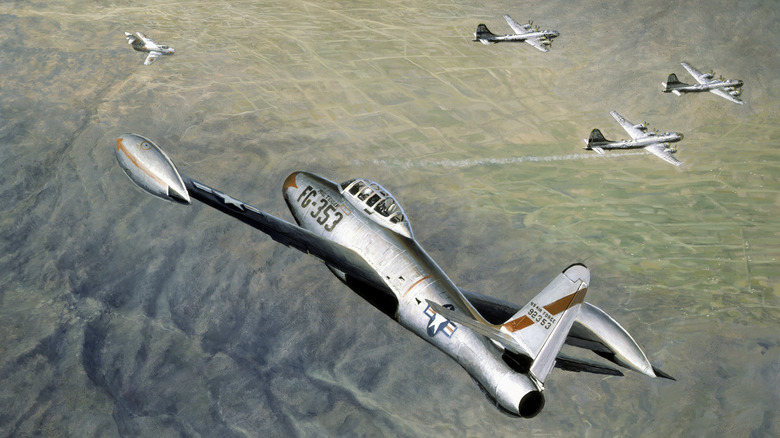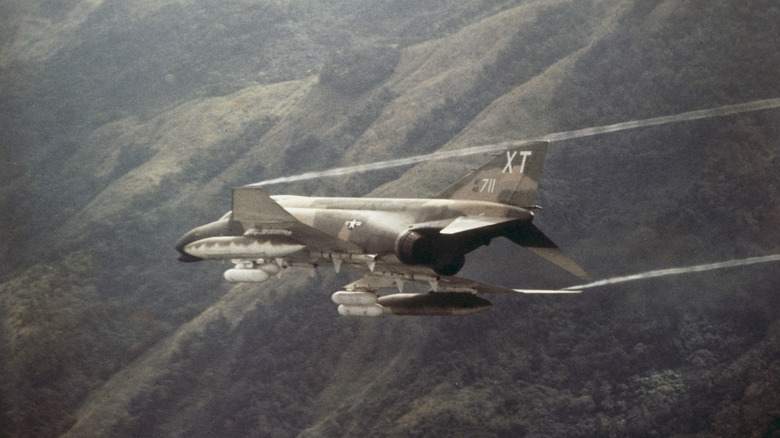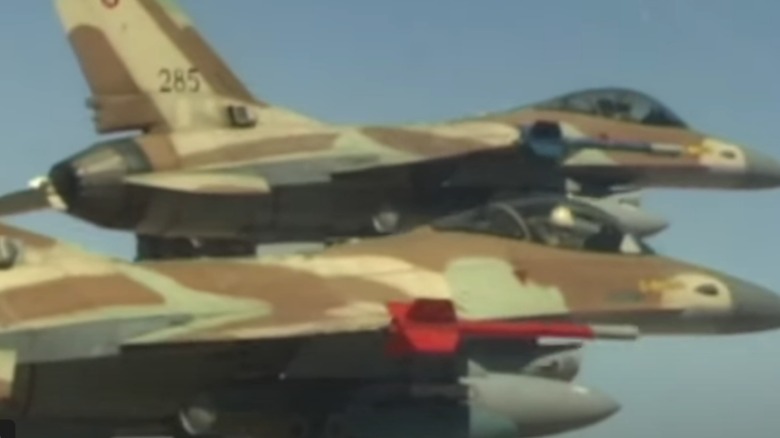8 Fighter Jet Battles You Probably Never Knew About
The Messerschmitt Me 262 that soared into combat in 1944 marked a revolutionary leap in aviation history as the first jet-powered fighter aircraft. As one of the oldest fighter jets, it set the stage for the rapid evolution of military air power, which has significantly shaped the outcomes of major global conflicts over the past 80 years.
Fighter jets have been more than just participants in these conflicts; they have often been crucial for achieving aerial supremacy, an essential component of any comprehensive military strategy. While many are familiar with their roles in well-known conflicts like the Vietnam War, the specific operations and strategic decisions behind them are less understood.
Here, let's explore the fighter jet battles you probably never knew about, from disputes over dense jungle territories to specific operations in larger theaters of war. Each battle, whether it involved intense air-to-air combat or demonstrated a stark imbalance of power, offers a unique perspective on the interplay between technological advancement and tactical execution. These engagements not only highlight the critical importance of air power but also provide fascinating insights into the evolving dynamics of aerial warfare.
NATO Air Campaign in the Kosovo War, 1999
Although NATO has existed since 1949, with the original objective of countering the threat of Communism and the Soviet Union, its military engagements all occurred in the post-Cold War era. Its major involvements in the '90s centered on Yugoslavia's breakup, including the Bosnian War and the Kosovo War. Between March and June 1999, NATO carried out an extensive aerial bombing campaign against the Federal Republic of Yugoslavia. Operation Allied Force aimed to end the slaughter and persecution of ethnic Albanians that was unfolding in Kosovo. NATO didn't commit any ground troops to the operation and relied solely on superior air power.
Operation Allied Force was the largest military operation in Europe since the end of WW2. It was characterized by a high-intensity, ever-escalating campaign of airstrikes that aimed to halt the unfolding humanitarian crisis and pressure Slobodan Milosevic's Yugoslav government into accepting NATO's terms for peace. Over 78 days, NATO forces carried out 38,000 sorties and didn't suffer a single fatality. They used advanced, precision-guided weapon systems to minimize civilian casualties. Target selection was also reviewed extensively to make sure that the campaign subscribed to international law and was militarily justified.
While a noble goal, there were still civilian deaths that sparked controversy and challenged the effectiveness and morality of high-altitude bombings. It also had battlefield ramifications that hobbled the effectiveness of NATO's air force. Regardless, Operation Allied Force was instrumental in pressuring Milosevic's regime to accept NATO's terms for peace.
The Bekaa Valley Turkey Shoot, 1982
During the 1982 Lebanon War, the Bekaa Valley witnessed one of the most lopsided aerial battles. Operation Mole Cricket 19, often called the Bekaa Valley Turkey Shoot, highlighted the IAF's (Israeli Air Force) technological and tactical supremacy over its neighbors and stands out as a key turning point in the deadly dynamic between aerial fighters and SAMs (Surface-to-air missiles).
It stands in stark comparison to more recent confrontations between Israel and its neighbors. Since the victory during the Six-Day War, the IAF had suffered and neighbors had gained the upper hand. This was clear during the 1973 Yom Kippur War where the IAF was humbled, and its future role was cast in doubt. Some of the top military brass thought the key lesson from this conflict was SAM usage and Israeli military strategists had their work cut out. The Bekaa Valley Turkey Shoot provided an answer and routed the Syrian forces. It was a culmination of tactical ingenuity, superior technology, and effective coordination. The Syrian forces were decimated. It was a humiliating tactical and psychological loss. In 46 hours, everything had changed.
Using drones for surveillance and employing advanced F-15 and F-16 fighters, The IAF destroyed many SAMs and enemy aircraft and suffered few losses. The Syrians were left scrambling, shifting the balance of power in the region. It also emphasized the importance of electronic warfare in air superiority and restored faith in the IAF's ability to conduct effective missions.
Operation Black Buck, 1982
It's not always easy to measure the efficacy or consequences of military operations. When considering the costs, the time, and the overall influence on a conflict, conclusions can be contradictory. Operation Black Buck is a great example of such an operation. The operation has been denounced as an abject failure and a total waste of money. But it has also been celebrated as changing the outcome of the Falklands War. One thing is certain though: It was an ambitious mission.
Sparked by the 1982 invasion and occupation of the Falkland Islands by Argentine forces, Operation Black Buck was the longest bombing mission ever attempted up to that point. It was a series of air raids launched from Ascension Island, over 3,700 miles away from the Falklands. In an intricate process, aging Vulcan fighters needed to refuel mid-air in order to reach their destination. The aim of the mission was to damage the airport at Port Stanley.
The overall impact of the raids was minimal. The operation was expensive, the runway at Port Stanley was only hit once and it did not really have a serious tangible impact on the Argentinian war effort. However, the psychological impact on the enemy cannot be underestimated. The Argentinians had presumed that the British would not respond with force, and Operation Black Buck shattered these illusions. The missions tested the pilot's endurance and the aircraft's limits, highlighting the lengths that nations can go to in order to project power across the globe.
Cenepa War Dogfights, 1995
The Cenepa War was a brief military conflict between Peru and Ecuador fought over a section of remote Peruvian jungle. Over 34 fiercely fought days, almost 100 soldiers died in the last war between Latin American neighbors. This was the latest in a series of wars between the two nations, the last conflict occurring in 1981.
Peru ostensibly had a stronger military and had won the previous conflict between the two nations. But Ecuador came prepared with modern military technology, including anti-aircraft missiles, French-built Dassault Mirage F1JA and F1JE fighters with air-to-air missiles, and Israel Aircraft Industries Kfir C.2 and TC.2 fighters. The war's air battles highlighted the challenges of deploying modern military technology in dense jungle environments, and Ecuador took advantage of the high ground. It quickly established air superiority and shot down seven Peruvian aircraft, while only losing one.
Peru's army was numerically far larger but the air force was a husk of its former glory. Poor maintenance, lack of spare parts, and lack of morale meant that the Peruvian forces were at a severe disadvantage. They flew up to 16 sorties a day but suffered heavy losses and couldn't even differentiate between friend and foe in the dense jungle. The Ecuadorians were dominating and were dug in. But it was all over soon after it began. The war ended with a UN-brokered ceasefire that subsequently led to normalized diplomatic relations and, ultimately, a peace agreement in 1998, formally resolving the territorial disputes.
Battle of Bubiyan, 1991
Some of the most effective military strategies demonstrate seamless coordination between different branches of the armed forces. This was exemplified when Saddam Hussein's invasion of Kuwait in August 1990 prompted a vast international response. Led by the United States, a 42-nation coalition launched Operation Desert Shield, followed by Operation Desert Storm, which decisively defeated Hussein's forces. The air campaign played a pivotal role throughout the conflict, including during the Battle of Bubiyan.
The battle took place between January 29 and February 2, 1991. The Iraqi forces were obliterated by a combination of aircraft and warships. The coordination of fighter jets and warships demonstrated the essential role of aerial support in modern naval warfare. Unilateral control of the seas and the skies meant that the short battle was decisively one-sided. Fighter jets like the F/A-18 Hornet Tomcat launched relentless air strikes against Iraqi forces. The Iraqi navy was totally destroyed.
Given that the Iraqi air force had already fled to Iran, the military was essentially kneecapped and lost all the military threat it had carried. The Coalition continued to inflict devastating losses on the Iraqi forces and by the end of February they surrendered and accepted the terms of the ceasefire. Although the Battle of Bubiyan wasn't the essential battle of the war, it's still a fascinating demonstration of the coordination between different elements of the military.
Battle of MiG Alley, 1950-1953
Though jet technology started making an appearance at the end of WW2, the Korean War was the first conflict in which fighter planes and jets played a pivotal role. It featured the first jet vs jet aerial dogfights in combat history. The North Koreans flew Russian MiG-15s, while the UN flew F-86 Sabres. Nicknamed MiG Alley, the region surrounding the Yalu River hosted intense aerial combat. These pushed tactical theories and equipment to their limits, accelerating the jet age forward.
The MiG-15 was a nightmare for the Americans. It was a very capable aircraft with powerful armaments. Continuous attacks on the B-29 bombers ensured heavy losses. In response, the Americans had to deploy their most cutting-edge jet fighter, the F-86 Sabre. Ultimately, the Sabre proved to be the better aircraft and had the better pilots. With a reported 8:1 kill ratio, the Sabre emerged as the clear winner in the first air war of the jet age.
Amid countless skirmishes between MiG 15s and F-86 Sabres, the first documented cases of dogfights between the two jets occurred in November 1950. This was the pivotal month in the central arena where aerial warfare changed forever. The F-86 Sabres made an immediate difference and helped establish air superiority. The debate continues over whether it was superior aircraft or pilots that resulted in such a high kill ratio. Either way, MiG Alley will always be remembered as the site of the first jet vs jet battles.
Operation Bolo, 1967
When it comes to military tactics, sometimes deception is the name of the game. Operation Bolo, an aerial mission during the Vietnam War, is a fantastic example of aerial ingenuity and tactical deception. The brainchild of Colonel Robin Olds, the mission's simple ruse was for F-4 Phantom jets to masquerade as slower, less maneuverable F-105 Thunderchiefs. These had been suffering heavy losses to the North Vietnamese MiG 21s.
This wasn't the first time this strategy had been employed but it was the first time an entire strike force was being disguised. It essentially involved adopting the flight patterns and electronic signatures of the F-105s and setting a trap. The North Vietnamese fighters, lulled into a false sense of overconfidence were instead met with the overwhelming superiority of the Phantoms. 7 MiGs were shot down and 0 Phantoms were lost. This was an astonishing kill ratio and was a single mission record that stood throughout the war.
Indeed it was one of the most successful air battles of the Vietnam War. It had significant strategic and psychological implications. It boosted the morale of the pilots for subsequent operations and also led to a reevaluation of air combat tactics by the North Vietnamese. The tactics employed were deceptive and showed the important role that psychological warfare could have in aerial combat. It disrupted the enemy's operations and showcased some of the sophistication and adaptability of US air tactics.
Operation Opera, 1981
The last thing Israel wanted was for Iraq to develop nuclear capabilities. The last thing Iraq expected was a unilateral military operation against its own nuclear facilities. On June 7, 1981, this came to a head when the IAF conducted a bombing raid on the Osirak nuclear reactor near Baghdad.
A formation of Israeli F-16 fighters, supported by F-15 escorts flew over 600 miles into Iraqi territory in order to reach the nuclear facility. The mission was meticulously planned and the Israeli forces avoided radar detection and totally bypassed the defense systems. The fighter jet pilots flew low and skillfully. They delivered their payload with pinpoint accuracy. They didn't suffer any losses. They did all of this in broad daylight. It was a spectacular success for the pilots and for the F-16 Falcon. It was a stunning setback for Iraq.
This preemptive strike immediately halted any nuclear ambitions Iraq harbored. It was a clear demonstration of Israel's willingness to carry out operations beyond its borders and showed how an effective airstrike can carry out strategic geopolitical objectives. But it was also highly controversial. Israel defended its decision. The UN condemned it. Reagan seemed to respect the audacity of it. It actually mirrored the same justification for the U.S. involvement in 2003: A preemptive strike in order to remove weapons of mass destruction. Even today, it remains a key example of how air power can alter strategic landscapes and address perceived security threats before they actually materialize.
